Queensland’s fern fever
By Stacey Larner, Librarian, Queensland Memory | 31 August 2021
Pteridomania was the name coined by Charles Kingsley for the British fern fever of the nineteenth century. Unlike orchidelirium, fern fever was a pursuit embraced by all classes, open to anyone “possessing good taste”, as declared by Edward Newman in A history of British ferns. This fever spread to the colonies, with Australian ferns presenting exciting new opportunities for collection and decoration.
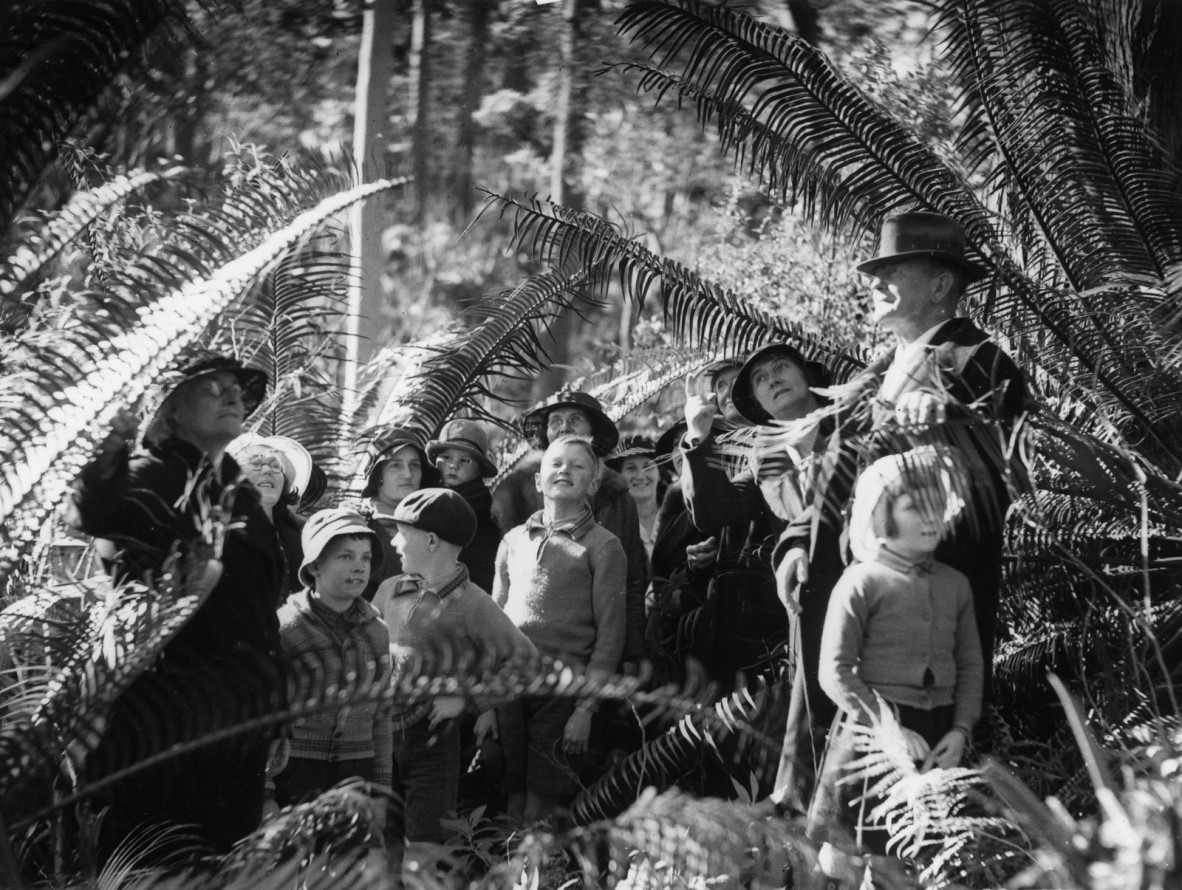
School excursion on Mount Tamborine, 1935. Negative number 199290, John Oxley Library, State Library of Queensland.
The creation of fern albums was popular among collectors, and the rare Queensland example below includes location information recorded by its creator. Charles Evans was so enamoured with ferns he would collect them as he was rounding up straying cattle while working in North Queensland in the 1880s.
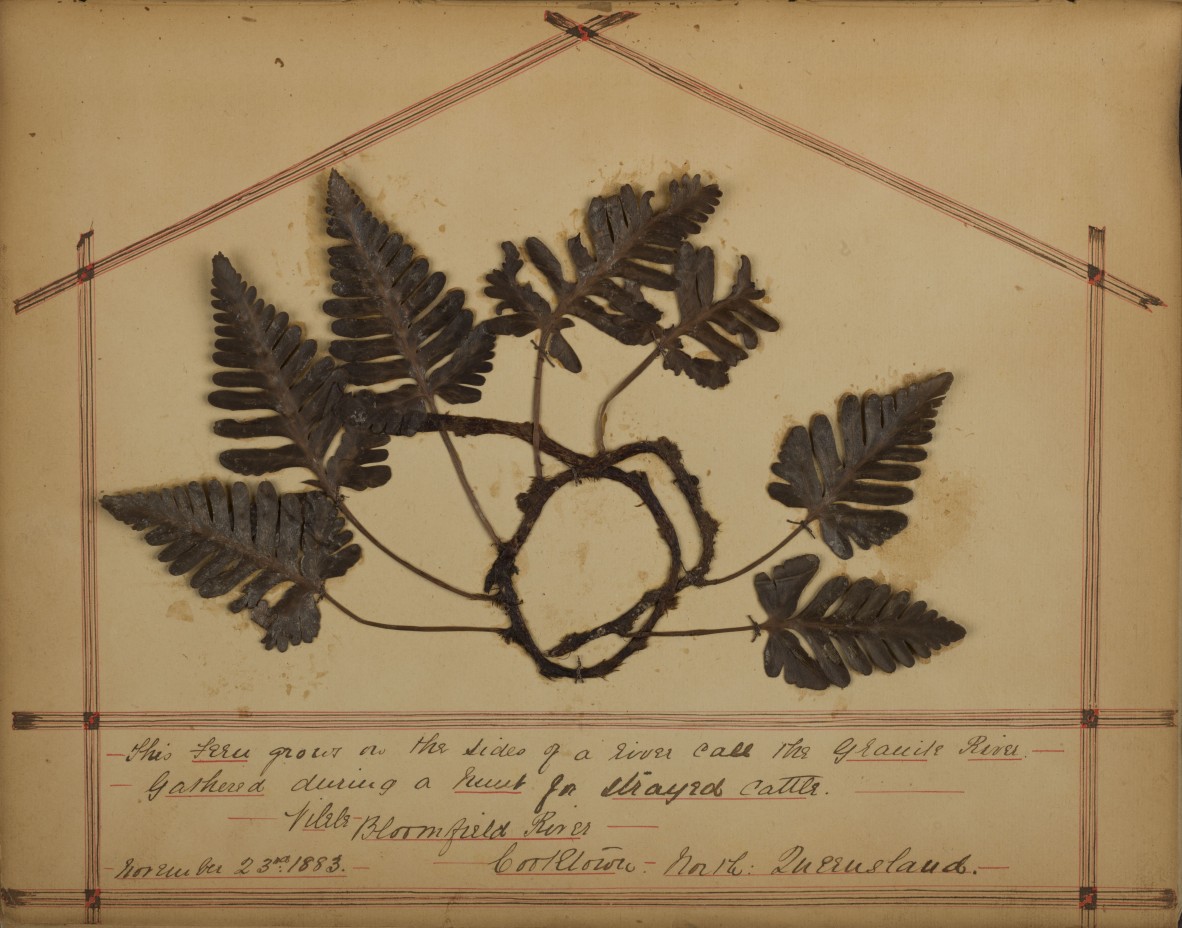
28613 Queensland Nineteenth Century Fern Album 1883-1884. Charles Evans ; 1883-1884, John Oxley Library, State Library of Queensland.
Ferns, with their flat and intricate leaves, presented interesting possibilities for mass-produced nature printing. Lithograms of the ferns of Queensland, published in 1892, was intended as a low-cost identification guide for fern enthusiasts. In his “prefatory notice”, Frederick Manson Bailey articulates this compromise between quality and cost: one way to keep costs low was to avoid the use of artists and engravers, and turn to lithography using specimens as nature prints.
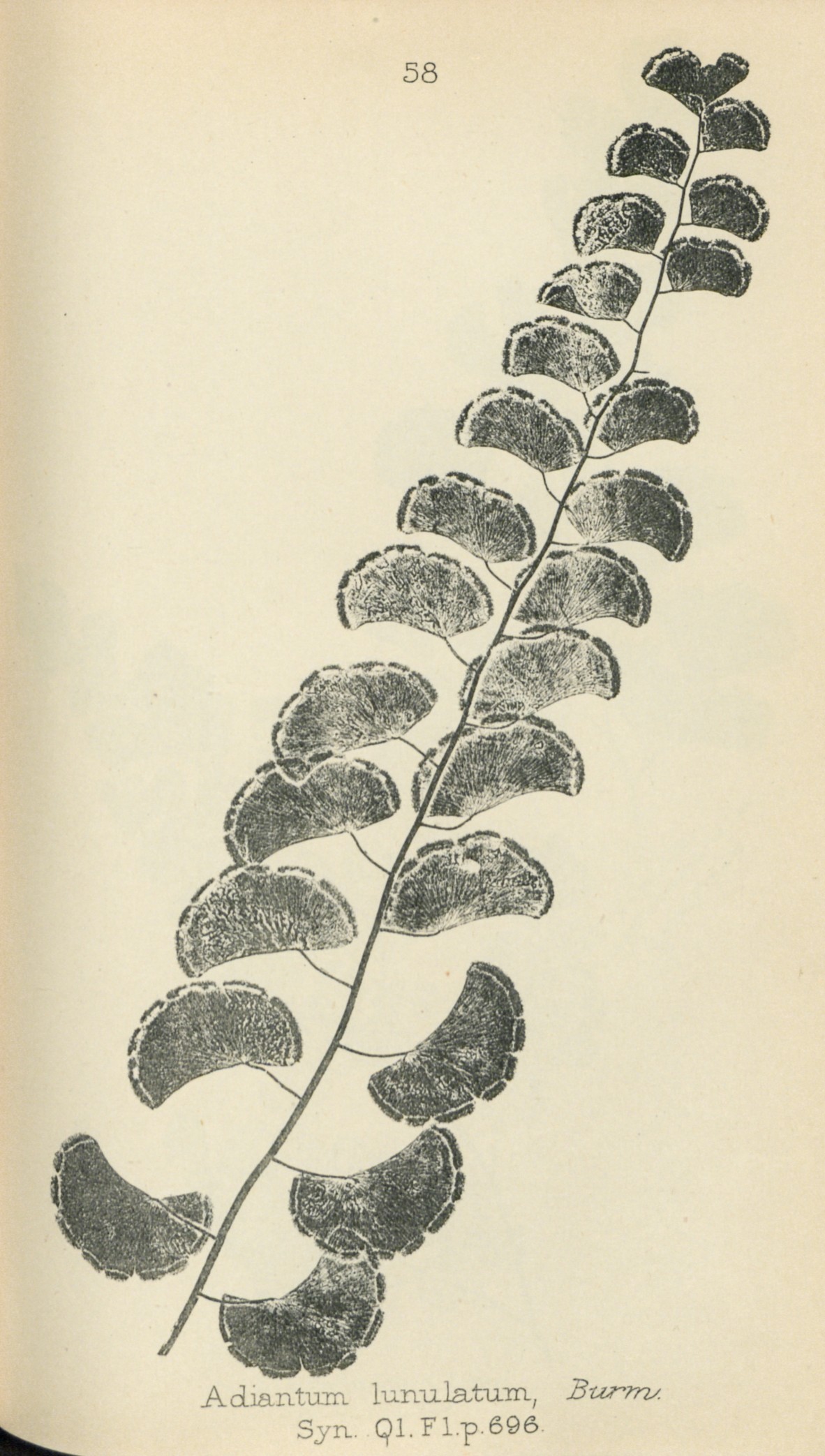
Lithograms of the ferns of Queensland by Fredk. Manson Bailey, Queensland Department of Agriculture, Brisbane, printed at the Government Engraving and Lithographic Office,1892. John Oxley Library, State Library of Queensland.
Queensland has no shortage of beautiful fern species, and the most exciting to discover must have been the epiphytic ferns like staghorns and bird’s nest ferns. Instead of requiring pots and greenhouses, epiphytic ferns could be hung as decorative pieces. An aesthetic quite peculiar to Queensland, the sight of staghorns adorning public and private infrastructure persisted well into the late twentieth century.
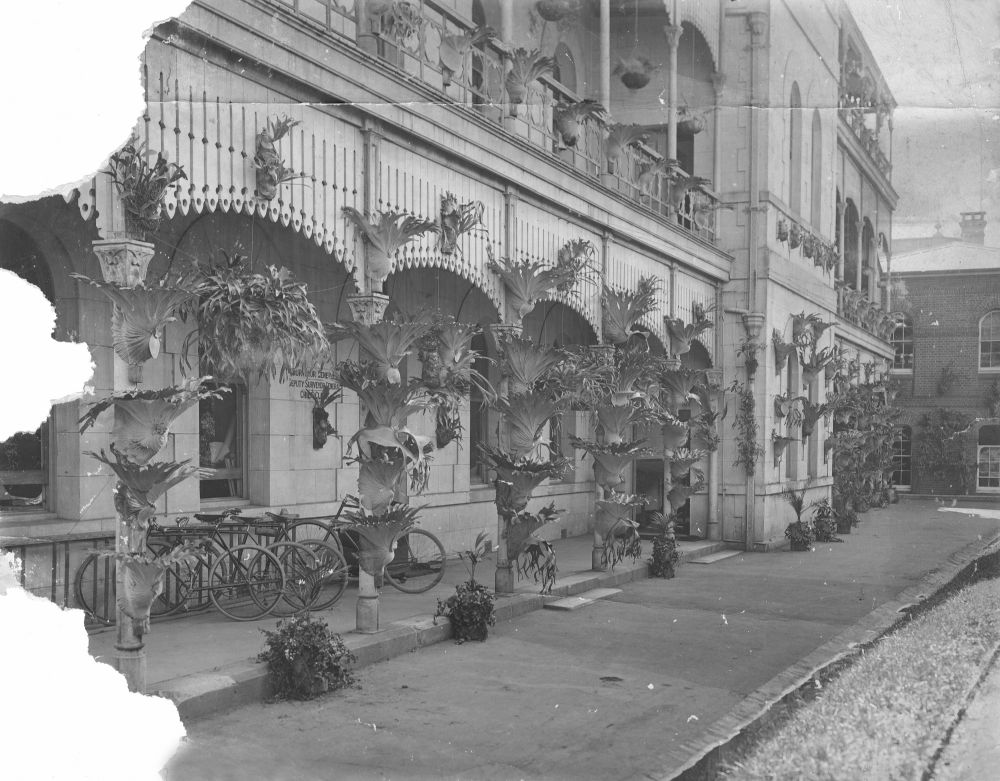
Staghorn ferns growing on the stonework of the Lands and Works Office in Brisbane, 1904. Negative number 201416, John Oxley Library, State Library of Queensland.
As with all collecting crazes, the fern fever saw plants stripped from their natural habitats to feed the appetites of collectors. The image below shows a collecting party picnicking after removing wild staghorns near Maryborough.
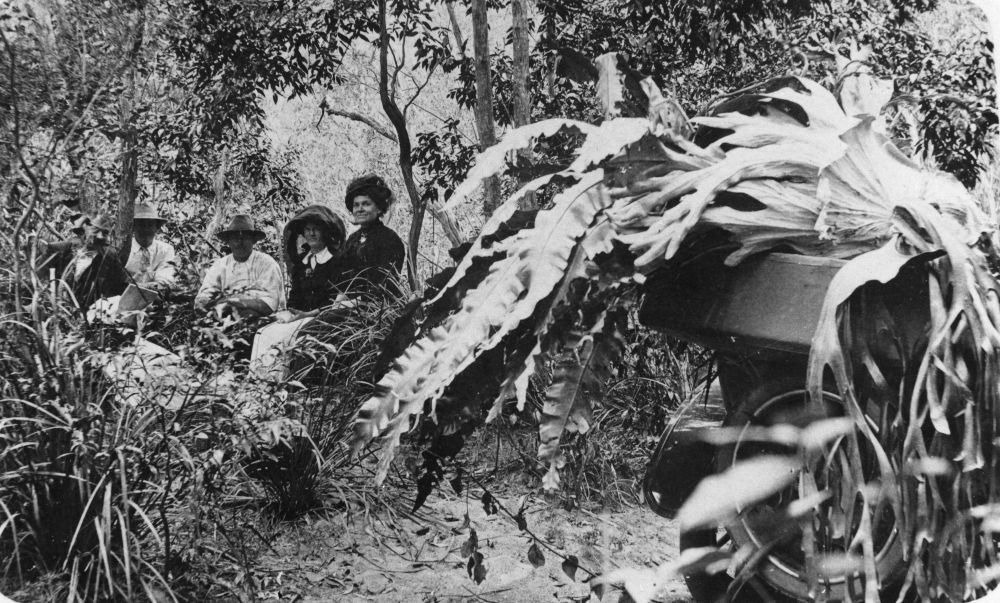
Group of people having a picnic in the bush near Maryborough after gathering staghorns, ca. 1915. Negative number 145763, John Oxley Library, State Library of Queensland.
Eventually this appetite for beautiful hanging gardens in public spaces waned, possibility due to the cost of maintenance. While South Brisbane station no longer boasts a fernery, Kuranda scenic railway station is one of the few whose tropical gardens persist.
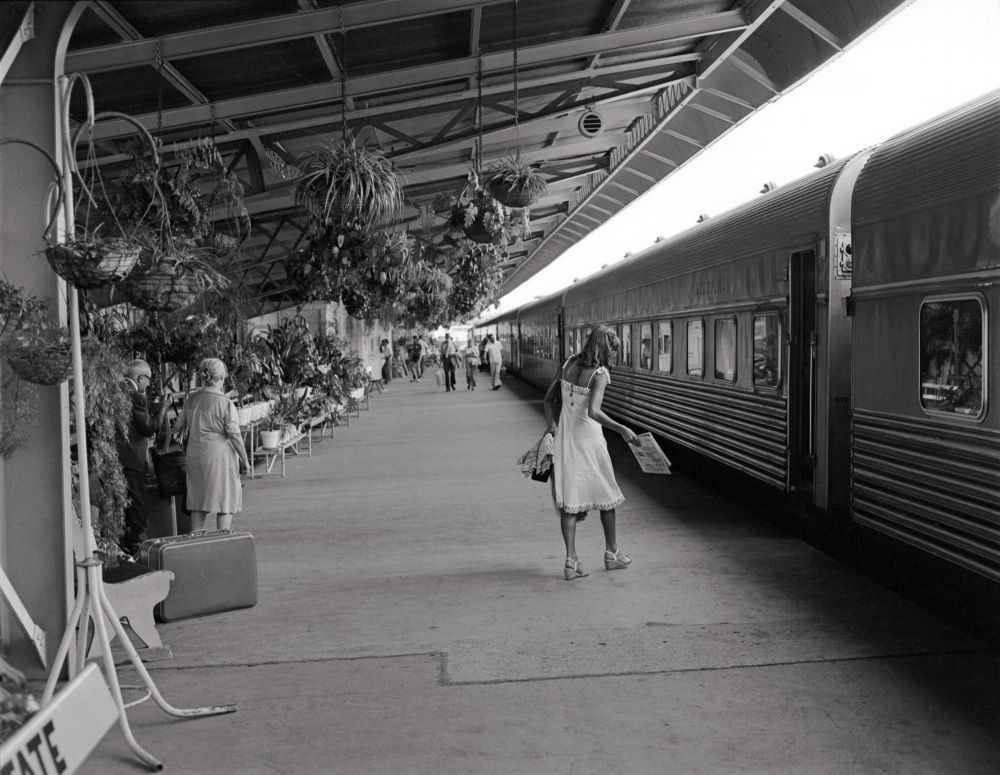
South Brisbane Railway Station, 1979. 30046, Peter Fischmann Queensland Rail Photographs, image number: 30046-0003-0003, John Oxley Library, State Library of Queensland.
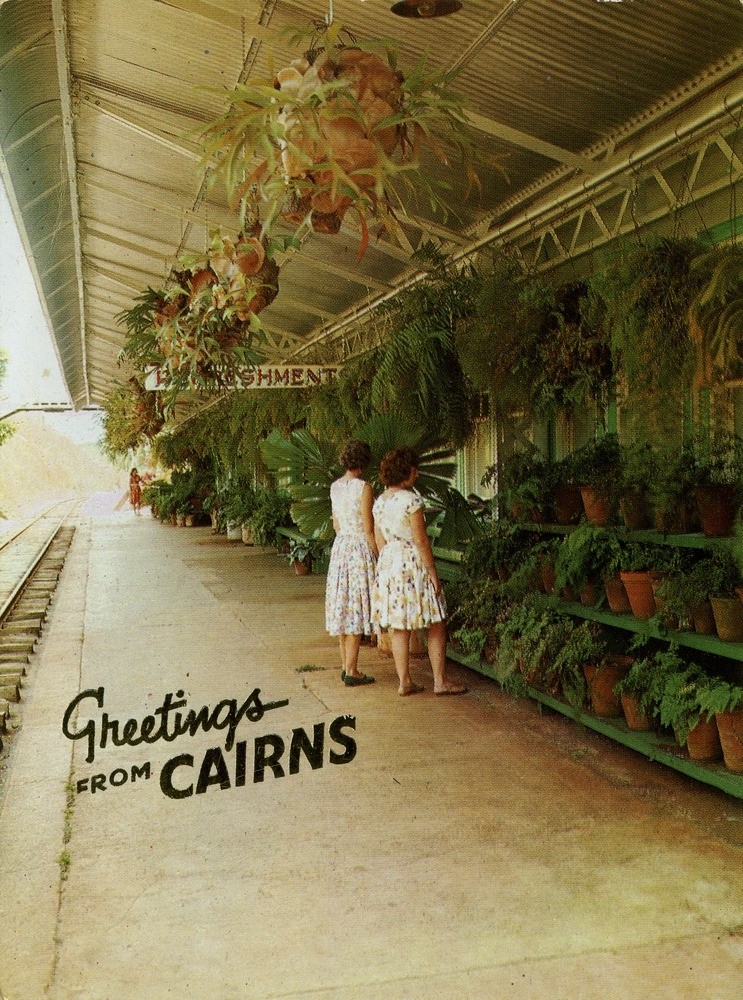
Visitors admiring the plantings on the platform at Kuranda Railway Station, Kuranda, Queensland. 19704831 Postcard Collection 1900-2013, image number 4831-0004-0096, John Oxley Library, State Library of Queensland.
Queensland ferns are featured in both the Entwined: plants and people exhibition and Kindred Spirits: plants and people publication. Kindred Spirits: plants and people is available to purchase from the Library Book Shop. With text by Shannon Brett, featuring images from State Library’s collection and more, it explores the ancient and ongoing connection between First Nations people and plants in Queensland. This publication was developed in response to the Entwined: plants and people exhibition which is open now and runs until November 14, 2021.
Other blogs relating to Entwined: plants and people
- Bountiful bunyas : a charismatic tree with a fascinating history
- Queensland's coastal kidneys: mangroves
- Orchidelirium: when love turns to obsession
- Keeping culture alive through weaving
- Xanthorrhoeas - An Australian Explosive
- The grand florilegiums of Joseph Banks and Ferdinand Bauer
- Queensland’s gympie-gympie: the world’s most painful plant
- Grand botanical publications of the 18th and 19th centuries: from scientific discovery to practical horticulture
Comments
Your email address will not be published.
We welcome relevant, respectful comments.